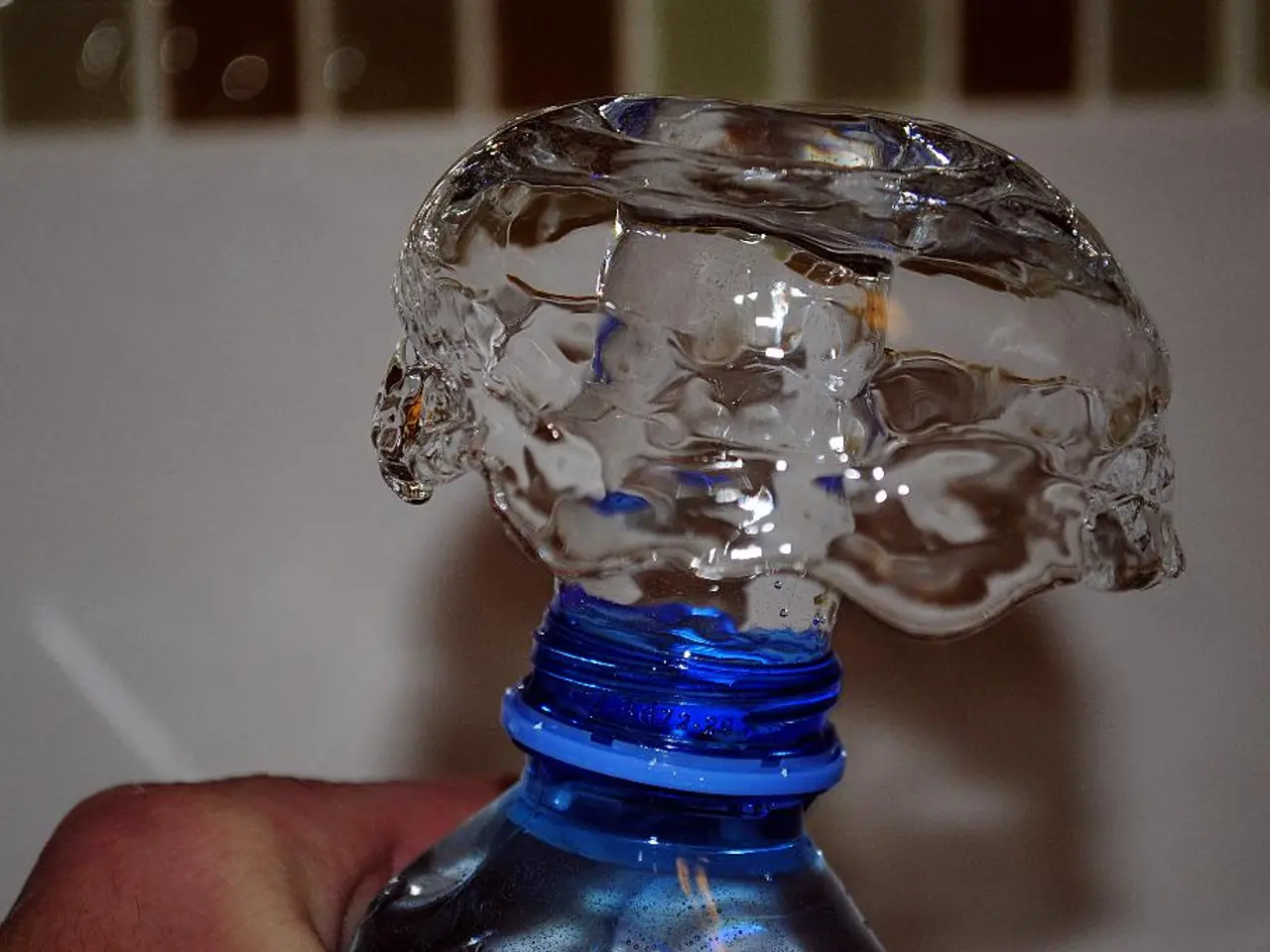Exploring Cold Plunges: Advantages and Drawbacks
In the realm of at-home wellness practices, cold plunges have gained popularity for their potential health benefits. However, these icy dips also carry significant risks that require careful consideration and safe practices.
### Health Benefits of a Cold Plunge
Cold water immersion therapy, such as cold plunges, is believed to offer several advantages. For instance, it can help reduce muscle soreness and inflammation, alleviating pain and aiding recovery after exercise [1][5]. Additionally, cold plunges may enhance mood and boost energy levels, possibly due to a release of endorphins and improved circulation [1][4][5].
Lowering body temperature and stress hormones through cold plunges may also help reduce overall physiological stress and improve brain focus [5]. Furthermore, some evidence suggests that cold exposure can stimulate immune responses, although the evidence is still emerging [5].
### Risks and Precautions
Despite these potential benefits, cold plunges are not without risks. Sudden immersion in very cold water can trigger the cold shock response, causing rapid breathing, increased heart rate, and elevated blood pressure, posing a risk of drowning or heart strain [1][3]. Prolonged exposure can dangerously lower your core body temperature, leading to severe complications including organ failure [1][2].
Other risks include cold panniculitis, a painful skin rash caused by damage to fat tissues under the skin [1], ice burns and frostbite due to direct contact with ice [1], and nerve damage resulting from reduced blood flow [1].
People with cardiovascular issues, respiratory problems, or other chronic health conditions are advised to consult a healthcare provider before attempting cold plunges [1][3].
### How to Safely Perform a Cold Plunge at Home
To minimise risks, it's recommended to acclimate gradually, starting with cold showers to allow your body to adapt to the temperature before progressing to cold baths [1]. Control the water temperature, aiming for water around 50-59°F (10-15°C), gradually lowering as tolerated [1].
Begin with 2-5 minutes, slowly increasing toward 10-15 minutes over weeks, and do not exceed recommended durations to avoid hypothermia [1][2]. Avoid full immersion initially, considering immersing limbs or partial body to reduce shock risk.
Monitor your body for signs of adverse symptoms such as shivering, numbness, dizziness, or breathing difficulties, and exit immediately if you experience any [1][3].
In conclusion, cold plunges at home can be beneficial for muscle recovery, mood, and stress reduction when done carefully and gradually. However, the risks—especially related to heart and nerve health and hypothermia—require caution and medical consultation if you have any underlying conditions [1][2][3][4][5]. It's important to remember that cold plunges should not be used as a replacement for medical care, and always consult a healthcare professional if you're unsure about your limits.
- For those interested in sports and fitness-and-exercise, cold plunges may be beneficial post-workout, as they can help reduce muscle soreness and inflammation.
- In the realm of health-and-wellness, the practice of sports-analysis could potentially benefit from cold plunges, as they might enhance focus and brain function.
- However, before delving into the weather-related health benefits of cold plunges, it's crucial to consider the risks, such as the cold shock response, which can trigger sudden breathing and heart rate increases, potentially leading to drowning or heart strain.
- In the study of science, the effect of cold plunges on immune responses shows promise, but further research is needed to confirm these findings and better understand their implications on overall health.




